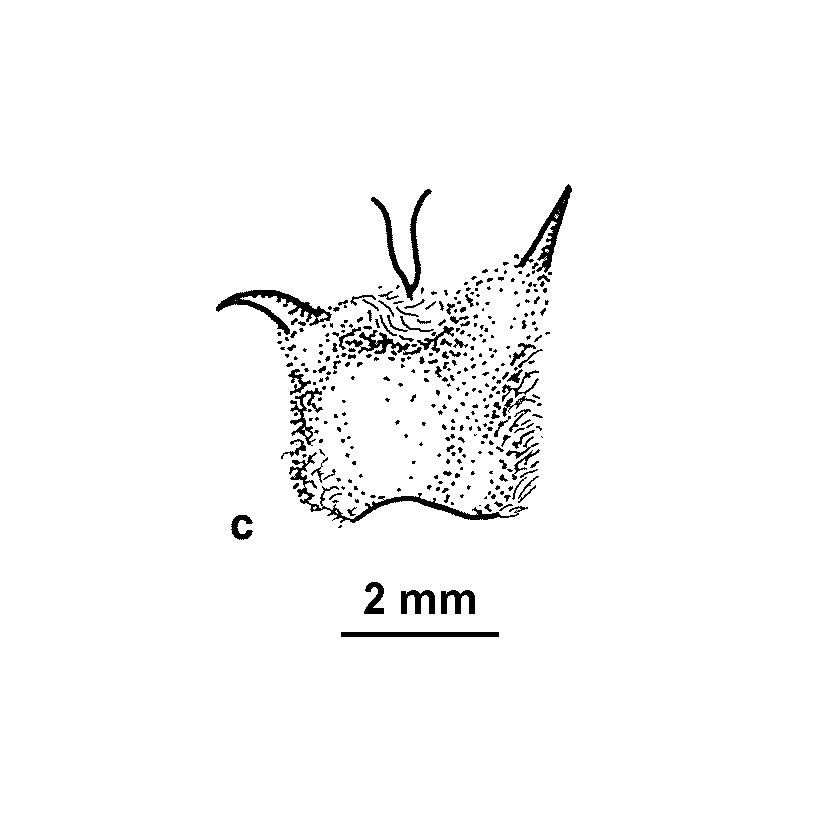Sclerolaena uniflora
R.Br.Decumbent to erect or spreading, greyish sub-shrub, to c. 40 cm high, branches densely covered with white or rusty, short-woolly hairs. Leaves rather crowded, often curved upwards, linear to narrowly oblanceolate, 6–13 mm long, densely covered with short-woolly to semi-appressed hairs. Tube of fruiting perianth 2–2.5 mm long and as wide or wider, densely tomentose, attached centrally at base or slightly obliquely, attachment circular, deeply hollowed, with thin radial septa within; limb not exserted above spine-bases; spines 2, virtually erect, 0.2–1 mm long, pubescent below, one with a short blunt tubercle at its base. Fruits mostly Oct.–Jun.
MuM, Wim, VRiv, Gold. Also WA, NT, SA, NSW. In Victoria confined to the far north-west and rather rare (e.g. Raak Plain near Nowingi, Hattah-Kulkyne National Park, Boundary Bend area). Occurring on loamy, subsaline soils, often rich in limestone or gypsum rubble.
Very close to Sclerolaena diacantha with which it may intergrade in some areas (see notes under that species).
Walsh, N.G. (1996). Chenopodiaceae. In: Walsh, N.G.; Entwisle, T.J., Flora of Victoria Vol. 3, Dicotyledons Winteraceae to Myrtaceae, pp. 129–199. Inkata Press, Melbourne.
 Spinning
Spinning



